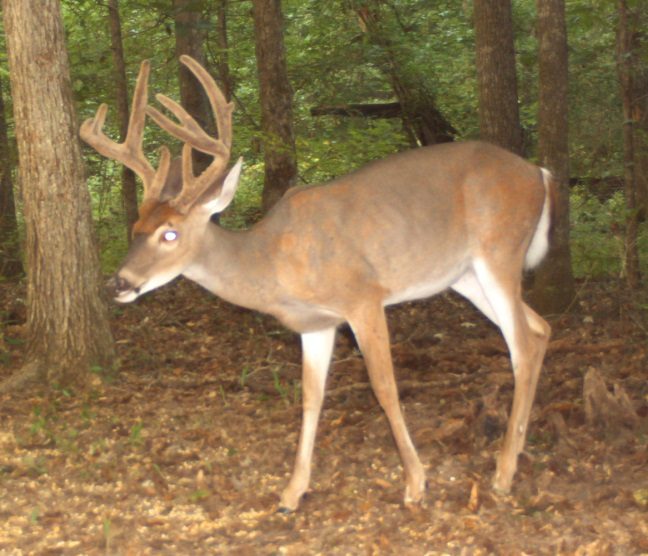Shoot or Don’t Shoot: Understanding Deer Harvest Decisions
In some areas hunting season is already underway and in others it is just around the corner. More than likely trail cameras are out on properties and hunting leases in an effort to gather photos of the next “dream maker”. While scrolling through the photographs looking for the buck with a rocking chair on top of his head, don’t overlook the young bucks that are photographed in the process – these are the next dream makers!! That is, if they survive. To ensure bucks have the ability to reach their potential or meet management goals, a variety of buck harvest criteria are commonly practiced.

Example of a young buck that would not be protected with an 8-point restriction
The most simple is the number of antler points. Historically, the most common antler restriction is the “8 point or better” rule. While this offers protection for some bucks in younger age classes, it allows the harvest of high quality yearlings and 2 year old bucks that have 8 or more points (aka the “Michael Jordans”). On the other end of the spectrum, this rule also protects mature bucks that have less than 8 antler points and may never reach this restriction. This is unfortunate because these bucks can be fun and rewarding to hunt because they are typically 4+ years old. While this system may be simple to follow, it leaves some holes in a sound deer management program.
Another commonly used restriction is antler spread, such as the popular “15-inch or better” spread rule. This usually corresponds to the same distance from ear tip to ear tip in a relaxed position an
d is easy for most hunters to judge in the field. Similar to using antler points, this rule has some of the same pitfalls as it leaves high-quality young bucks vulnerable to harvest and protects mature bucks with narrow racks.

Example of a mature buck that would not meet an 8-point restriction, or a 15-inch spread rule
A more reliable method that is gaining in popularity uses age-based criteria. That is, hunters are basing harvest decisions based on the estimated age of a buck by focusing on body characteristics and how they change as a buck matures. This strategy reduces the harvest of young bucks that have superior genetics for antler quality and allows them to mature and unlock their potential.
There are key body and behavioral characteristics to look for within each age class, ranging from yearling bucks to 5½+ year old’s. With a little practice, hunters can easily pick up on these features, and running trail cameras each year allows hunters to monitor antler progression of individual bucks over time. Additionally, there are a variety of educational materials available to hunters for learning how to age bucks on the hoof. Posters are available from The Quality Deer Management Association and Westervelt Wildlife Services to help educate hunters and club members. Protecting young bucks is a key component to quality deer management, which is practiced on most Westervelt hunting leases. The success of these programs relies on a hunter’s ability to determine how old a buck is before pulling the trigger. Please let us know if we can help and good luck this season!

